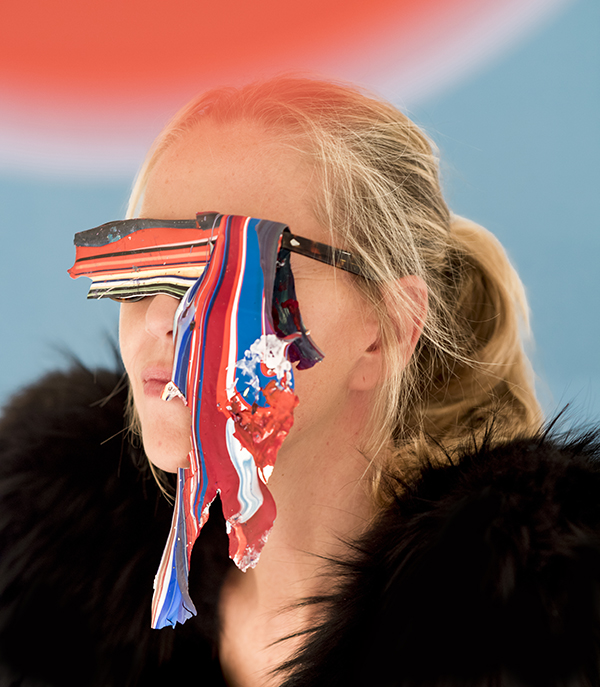About
Katrin Fridriks
Born in 1974, Reykjavik (Iceland), Katrin Fridriks is an abstract painter who explores speed, gravity and the interactions of human beings with the forces of nature.
Fridriks artistic work focuses on the exploration of natural phenomena and the limits of human dexterity. Experimenting with both techniques and the strength and agility of her own body, Fridriks continuously pushes the limits of painterly expression. She has developed a set of different techniques in connection with her explorations many of which she now combines to create works of art that are truly unique.
Her notoriety is mainly based on her paintings and painterly installations, one of which is installed at the Olympic stadium in Nîmes, but land art has also been an important element of her work. The presentation of her painterly creations often takes the form of site-specific installation that exceed the limits of painting traditionally conceived.
As they are based on the exploration of fundamental experiences, Fridriks works are immediately captivating. Having different layers that unfold over time, each new contemplation is rewarding and gives way to discoveries.
Showcased at the Venice Biennal – Palazzo Bembo, Kjarval Museum, the Icelandic Art Center in Reykjavik, the Museum Arts Center in Seoul, Liverpool Biennale, her works are in many public and private collections. Fridriks has received special commissions from Bentley’s 100th Year Anniversary while Frieze – London, a Book Cover for the Royal Award-Winning by Mark Miodownik, POW, Michael Goss Foundation, Ralph Lauren Foundation, Bacardi Martini, Land Rover as well as the French Ministry for Youth & Sports.
„When Fridriks bends the flow of color, she gives us a feeling of control. Her forms look as if they could not be controlled. However, they have been controlled. They don‘t move. We are in charge.“
„Fridriks‘ paintings function as both traces of processes and immutable results. Their complexity is masked by their apparent simplicity. They master what cannot be mastered – or so it seems. Something which still appears to be essentially mobile, fluid, and even overflowing, is literally arrested in each of them. But this is more than formalism. By fixing mobility, the paintings accumulate energy. This energy is released each time a spectator looks at one of them. As our gaze follows the path of the paint, we reactivate the motion contained in the process of creation. The painting works as a storage device.“
(Klaus Speidel, 2013)
 Catalina Sour Vasquez
Catalina Sour Vasquez
